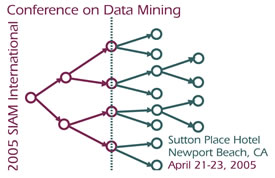
Highly Structured Models in High Energy Astrophysics
David van Dyk
UCI
In recent years, an important new trend has been growing in applied
statistics—it is becoming ever more feasible to build application
specific models which are designed to account for the hierarchical and
latent structures inherent in any particular data generation mechanism.
Such multi-level models have long been advocated on theoretical grounds,
but recently the development of new computational tools (e.g., hardware,
software, and algorithms) for statistical analysis has begun to bring
such model fitting into routine practice. Of course, much remains to be
done. The flexibility of methods based on Markov chain Monte Carlo, for
example, comes at a cost—they require problem specific coding, long
computation times, and present difficulties in ascertaining convergence,
especially when a posterior distribution is multi-modal. This talk
illustrates the power of multi-level models to solve real scientific
problems in High-Energy Astrophysics. In particular, we use a class of
new highly structured models that are designed to handle both the
inherent complexity of astronomical objects and the complexity of the
modern space-based instruments that study them; our methods are designed
specifically for the Chandra X-ray Observatory. Three examples will be
discussed: spectral analysis, image analysis, and the reconstruction of
the temperature distribution of hot matter in a stellar corona. Our
methods aim to answer scientific questions as to the physical
properties, such as the temperature, composition, and structure, of the
astronomical sources. From a statistical point of view, we discuss model
construction, model fitting, model checking, and inference, all in the
context of the three examples.